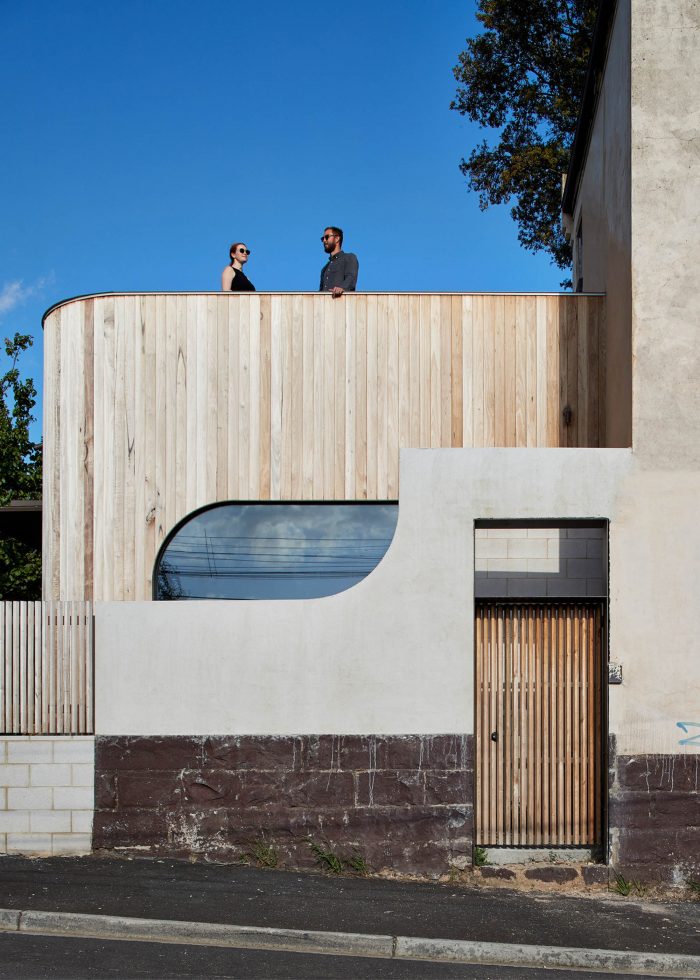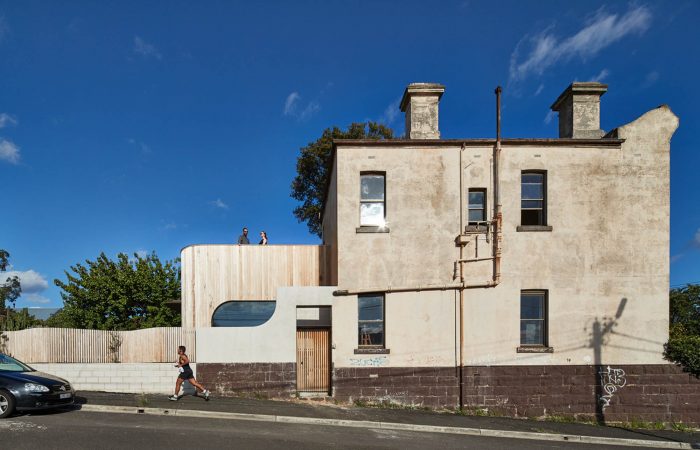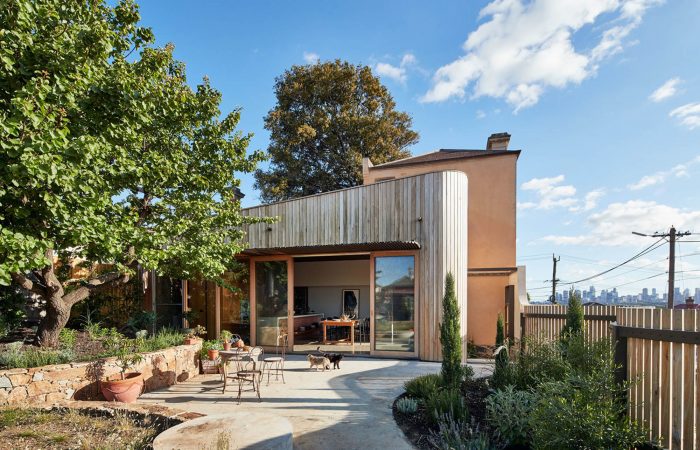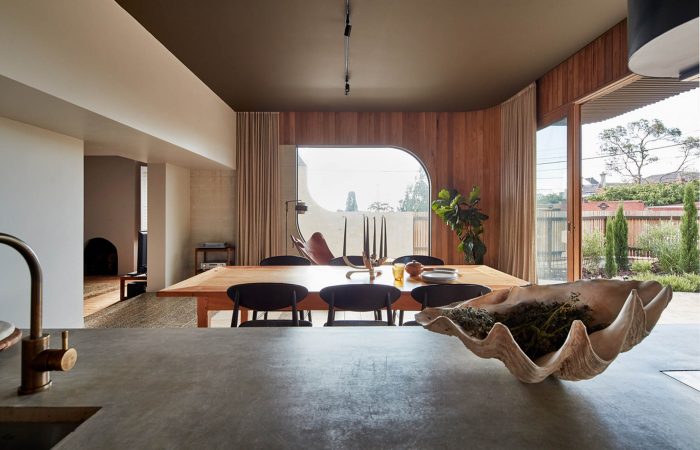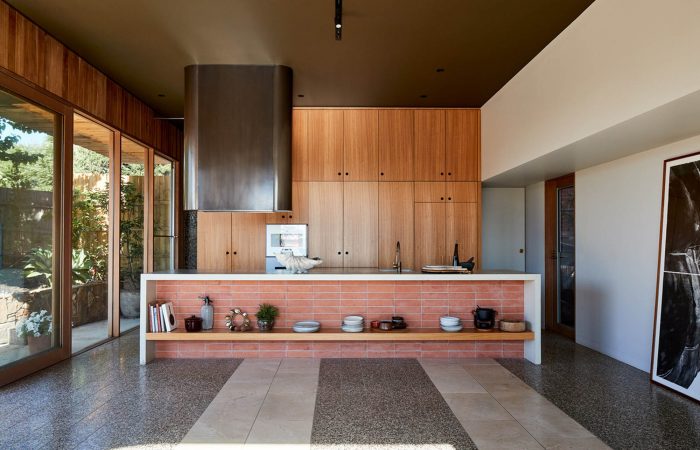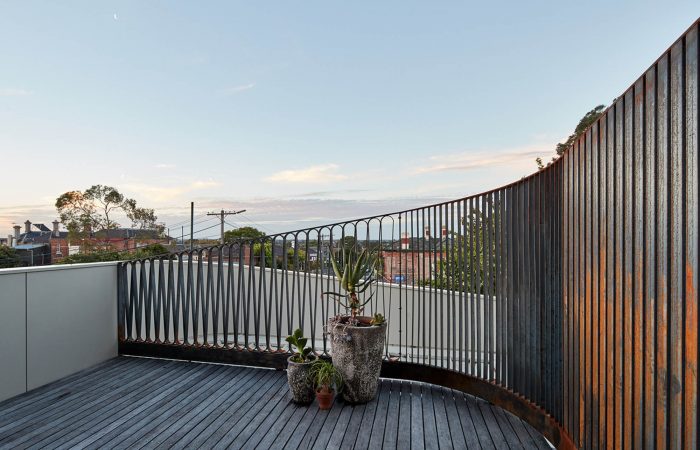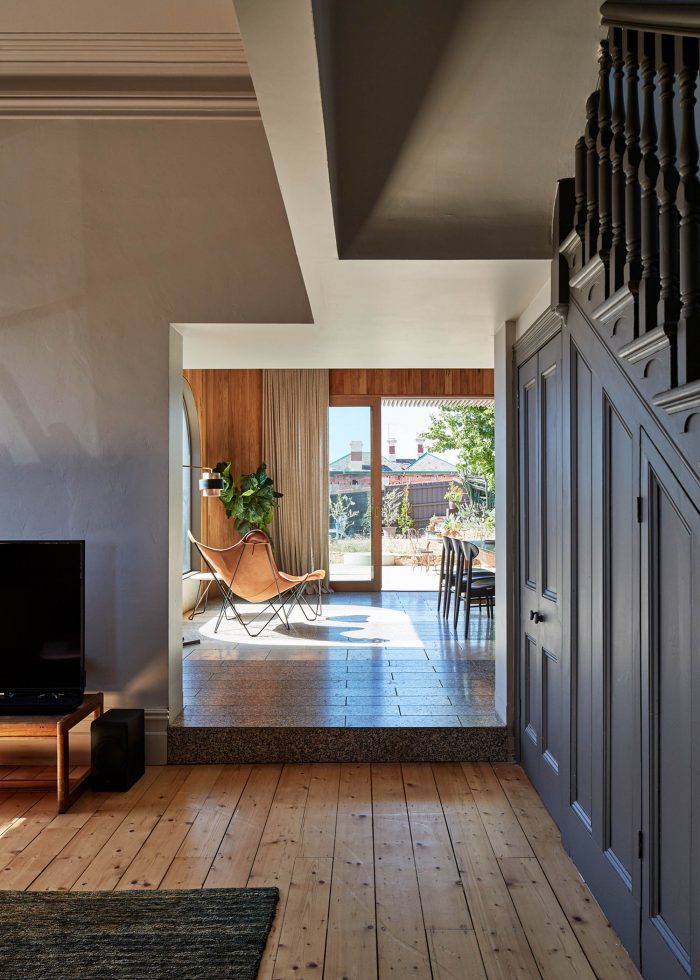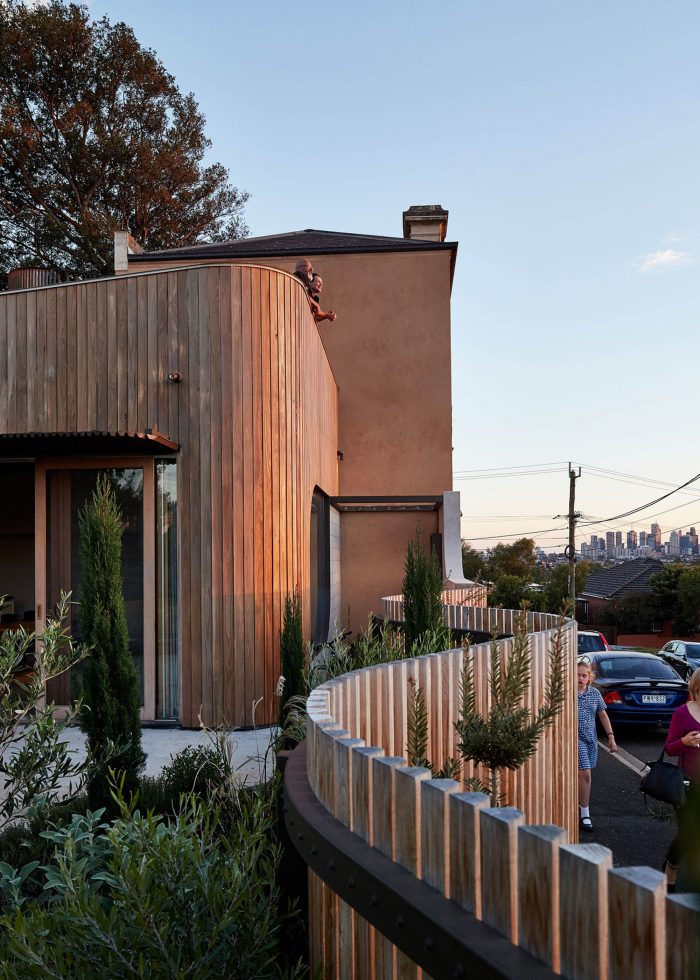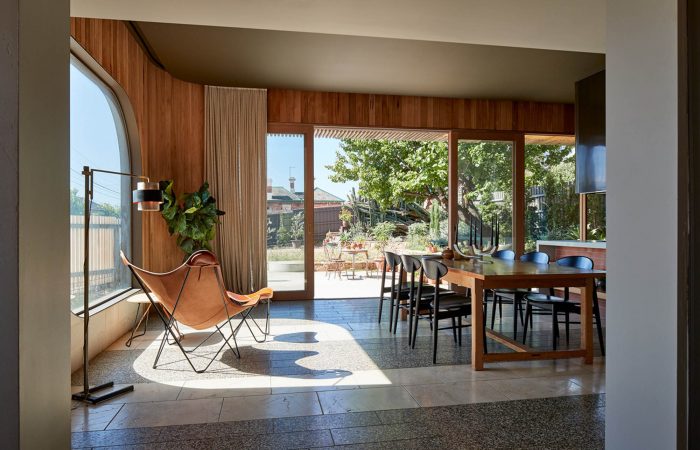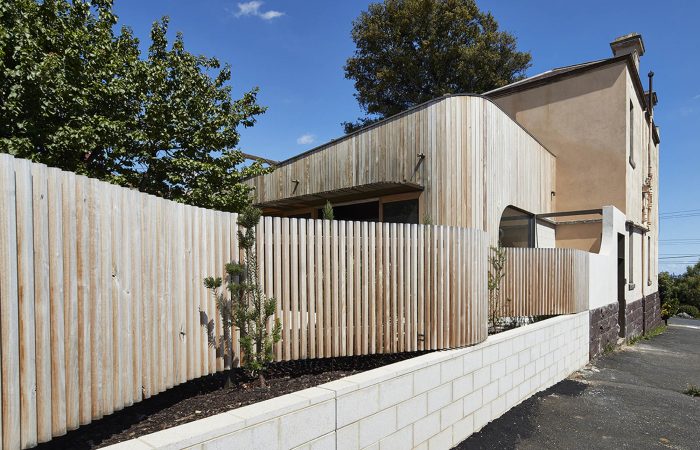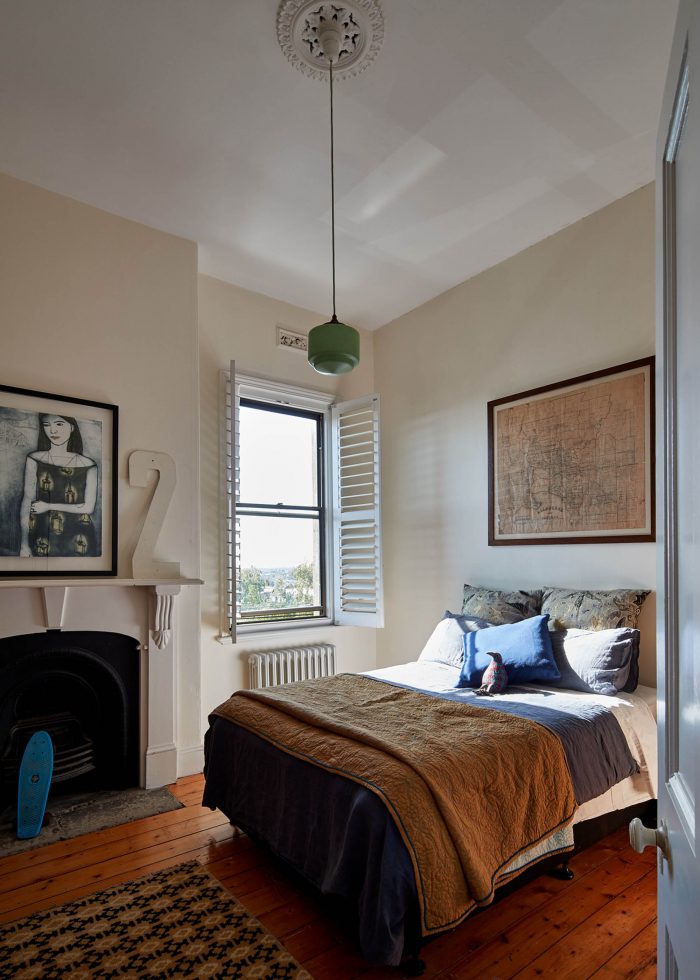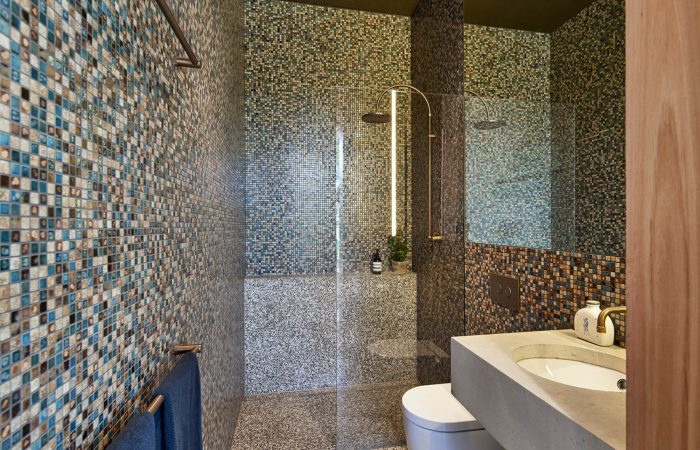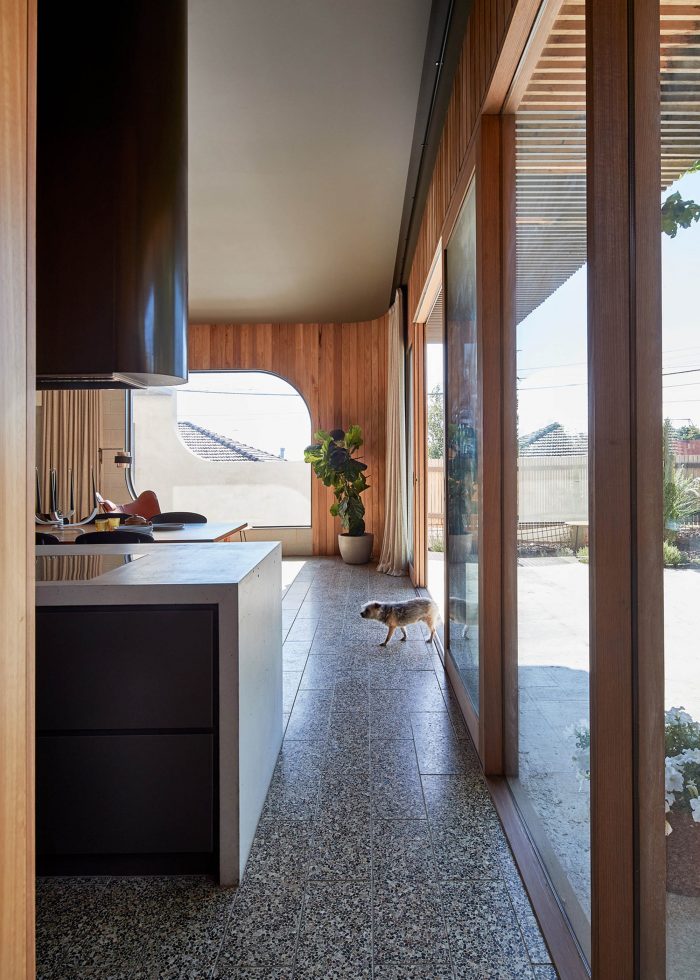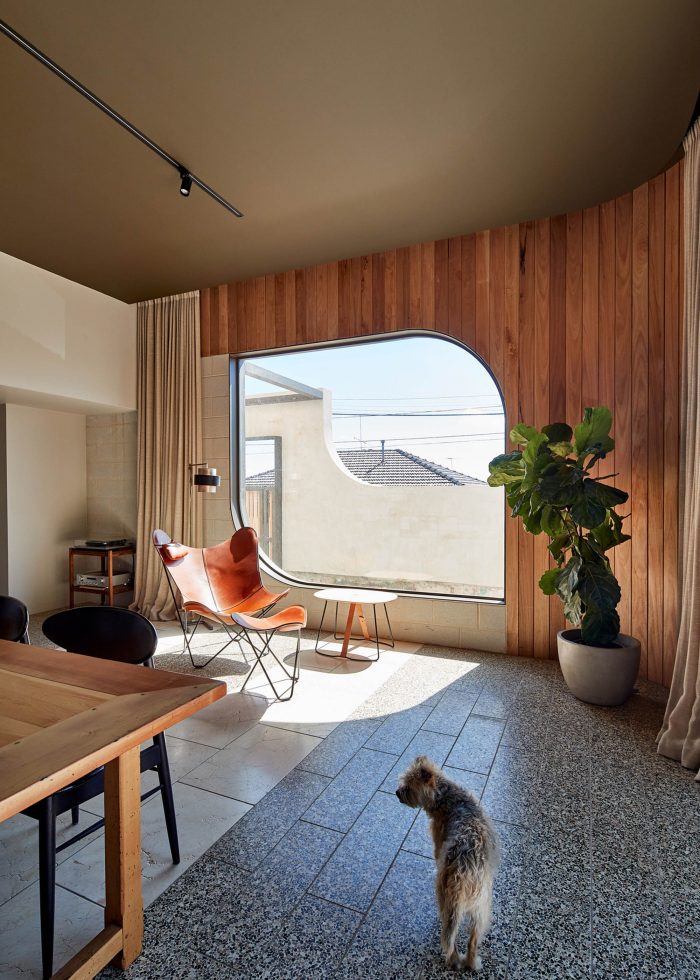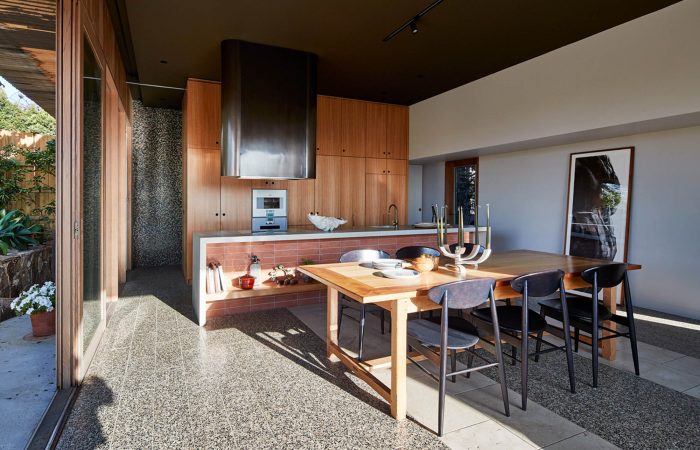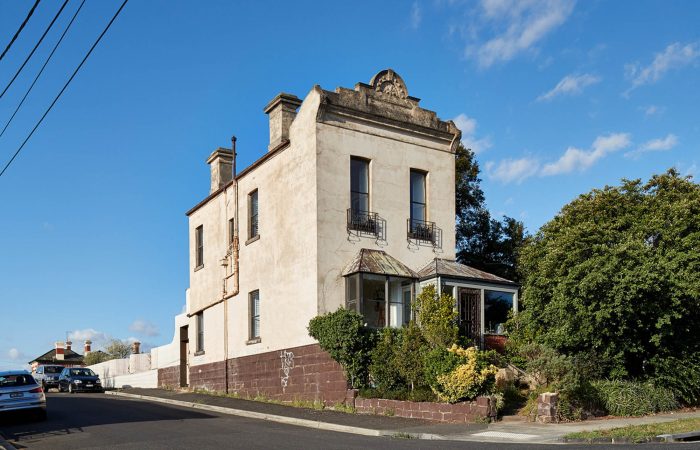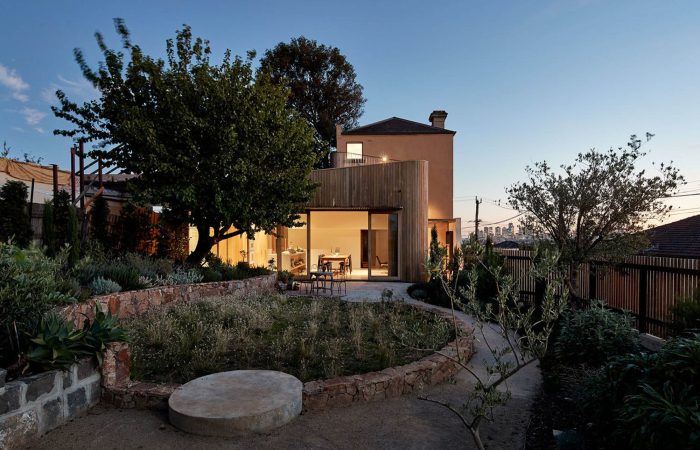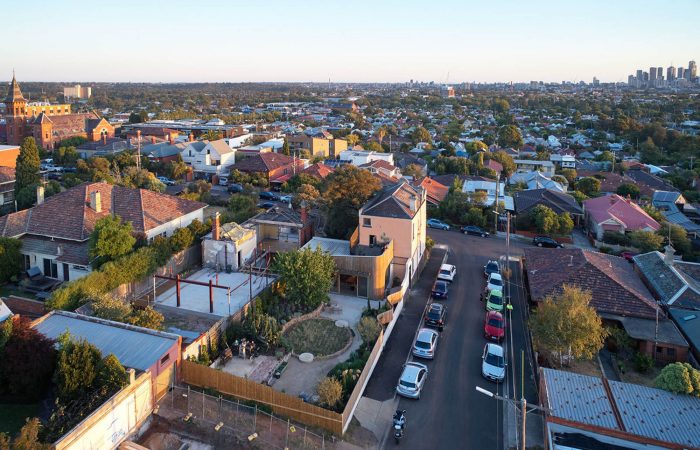翻新和扩建位于墨尔本市内的一座老旧的、无法使用的十九世纪维多利亚式露台,这个非常熟悉的任务很快就发展成了一个更大的、更令人关注的话题,即我们这个不断变化的社会如何生活,如何应对过去建筑的老化和保护。
The very familiar task of renovating and extending an ageing, unavailing nineteenth-century Victorian terrace in inner-Melbourne quickly developed itself into a larger and more concerning conversation about how our constantly changing society lives and responds to the ageing and preservation of architecture of the past.
我们的回应受到了客户的启发和指导,客户坚定地表示,她只是这个 “老太太 “目前的看护者;这个建筑在她之前就已经存在,并将在未来继承她的地位。通过将现有的房子比喻成一个穿着半身裙的 “老太太”,来探讨美感、老化、实用性和连续性。房子坐落在一个小山丘上,在一个拉长的角落场地的边界上,通过它的侧立面来思考。考虑到维多利亚时代的 “老太太”,我们将建筑图纸发展成维多利亚时代的女性肖像画,即历史上用来说明女性半身裙的明显时尚的图纸。作为一种自我表达的语言,半身裙在建筑上等同于我们的扩建工程如何为现有的房屋增加个性和存在感,而又不显着地重塑其身份和掩盖其古老的优雅。
Our response was inspired and directed by the client’s determined assertion that she was merely the current caretaker of this ‘old lady’; of this building that had preceded and would surely succeed her into the future. Beauty, ageing, utility and continuity were explored through the analogy of the existing house as an ‘old lady’ with a bustle dress. Perched on a hill and on the boundary of an elongated corner site, the house was thought of through its side elevation. With the Victorian ‘Lady’ in mind, we developed our architectural drawings as though they were Victorian portraits of women taken in profile – drawings historically used to illustrate the pronounced fashions of women’s bustle dresses. Used as a language of self-expression, the bustle dress became the architectural equivalent of how our extension would add character and presence to the existing house without dramatically recreating its identity and cloaking its aged grace.
包含厨房、餐厅、浴室和洗衣房,这个适度的加建部分位于现有房屋的后方,并位于场地和配套花园的中心位置。这重要的也意味着扩建部分可以建立和模糊房屋和后院与相邻街道和社区之间的关系,这是对传统私人后院的重要想法。繁华的语言被引用在扩建部分的弧形墙壁和窗户,以及沿着房屋侧面边界摆动的木材丝带中。
Containing a kitchen, dining room, bathroom and laundry, the modest addition was positioned to the rear of the existing house and centrally to the site and accompanying garden. This importantly also meant that the extension could build and blur the relationship between the house and backyard and the adjacent street and community, an important idea in response to the traditional private backyard. The language of the bustle is referenced in the curved walls and windows of the extension and the ribbon of timber that oscillates along the side boundary of the house.
语言是繁华的火车与木材栏杆它的花边和生长在整个刺绣的树木。这种马车裙形象的完成将这些建筑附加物联系在一起,以强调现有的房子,并根据其现代需求进行修改。然而,它们也巧妙地论证了原来的房子是未完成的东西,但具有不可否认的美。我们的建筑加建并不希望重新塑造我们的建筑是谁,我们也不希望改变它的面貌或身份。相反,我们有意识地让房子优雅地老去,承认其风化的本质是一种美和尊重。
The language is of the bustle train with the timber balustrade its lacework and the trees that grow throughout its embroidery. This completion of the image of the carriage dress ties together these architectural additions to emphasise the existing house and modify it to its modern needs. However, they also delicately argue for the original home as something unfinished but with an undeniable beauty. Our architectural addition didn’t wish to re-shape who our building was, and we didn’t wish to change its face or identity. Instead, we were conscious of allowing the house to age gracefully by acknowledging its weathered nature as a thing of beauty and respect.
建筑师:FMD Architects
面积:193 m²
年份:2017年
摄影:Peter Bennetts
城市:墨尔本
国家:澳大利亚
Architects: FMD Architects
Area: 193 m²
Year: 2017
Photographs: Peter Bennetts
City:Melbourne
Country:Australia


